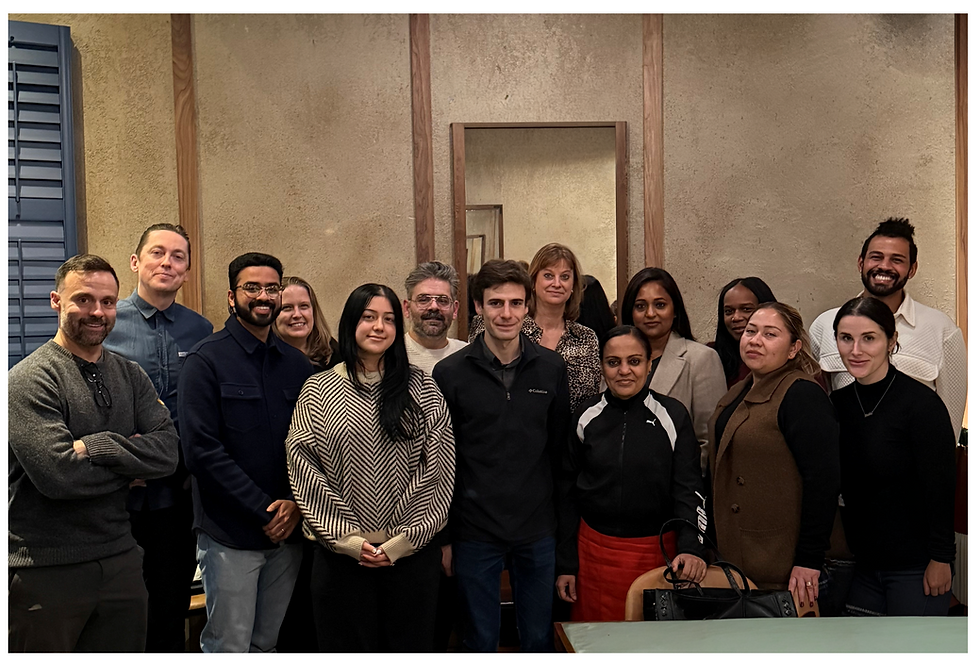Reporting Road Violence - A Cyclist's Guide
- Dave Shellnutt

- Oct 26, 2024
- 3 min read

Two cyclists were attacked by a motorist in High Park, Toronto. They had asked that he leave the bike lane and the situation exploded, the driver trying to run them off the road. We are advised the cyclists of their rights and entitlements following this terrible interaction.
We have written about road violence and roadside assault before. We have cautioned cyclists to keep in mind that these situations can escalate quickly beyond your control. The person behind the wheel may be pre-disposed to violence, and while you may have been cut off or wronged, you are particularly vulnerable out there. Although you are in the right, violence is unpredictable and the after affects of trauma can linger on for years.
For years, TBL has been condemning violence on our roads against Vulnerable Road Users:
Police must see cyclists as particularly vulnerable road users. Drivers who threaten their safety, especially deliberately and violently, must be held responsible and firm penalties must be consistently applied if we hope to deter this violent behaviour going forward. We should also consider new laws.
As we wait for legislative changes and police to take road violence perpetrated against cyclists seriously, we wanted to provide more practical information for you to be able to report and push back.
If you encounter a dangerous or violent driver, please consider the following:
Get safe, get off the road and call for help, either from bystanders, shop owners, or the authorities.
Memorize the license plate. If you can't get a picture, say it over and over until you are safely off the road and then text it to yourself.
If possible/safe to do so video record the interaction, take pictures of the driver/car/license plate, get witness information.
Report to authorities*** [See cautionary note below]
If you are injured in any way, contact The Biking Lawyer LLP without delay.
If you are not physically injured, most municipalities across Ontario allow you to report dangerous driving online. In the case of interactions with dangerous drivers where you are not injured you should use these tools to report the dangerous driver, and that includes violent or abusive behaviour.

From parking in bike lanes to veering into your path, we need to create data on the frequency of safety issues we face in order to advocate for change.
Here is how you can report dangerous driving to authorities in your area:
Hamilton Police has an “Aggressive Driver Hotline and Email”
Hotline: 905-546-1768
You may report dangerous and violent drivers and not be contacted by police. Politely follow up with them if you haven't heard anything.
One of many disappointing interactions I've had was when I was pushed from behind by a motorist into a busy intersection. I filed a police report and I’m still waiting for Toronto Police to contact me.
Nevertheless, report! You will get a report number after submitting your report online. Follow up in 3-5 days and ask what the police have done about the incident. If the answer is nothing or unsatisfactory, inform your local councillor.
Of course, if you are injured seek medical attention, have the authorities attend the scene and contact The Biking Lawyer LLP for advice.
To what end you might ask. What is the purpose of reporting?
First, it will be on that driver’s record and in theory could be reviewed or considered in future incidents where they undoubtedly do hit and injure someone else.
Second, and more broadly, for our collective cycling community safety these reports create data that local cycling advocacy organizations and groups like https://bikemaps.org/ can use to justify policy, infrastructure and law changes in the name of safe streets.
***We ask that everyone that uses a police reporting tool consider the particular vulnerabilities of community members most often targeted and experiencing violence by police; Black, Indigenous, Trans folx, and sadly the list goes on. We cannot rely on the police to solve our road violence issues and must look beyond them for solutions to toxic masculinity, which pervades our society. Our own communities and elected officials are where the leadership has to come from and where the work needs to be done.
#thebikinglawyer #thecyclinglawyer #cyclinglaw #cyclinglawyer #bikelawyer not a #bikeaccident #bikecrash #carcrash #ontario #hamilton #toronto #london #ottawa #kitchener #windsor #waterloo #guelph #backonthebike #backontrack #insurance #bikeinsurance #ridesafe #rulesoftheroad #safestreets #ridetogether #Bikeaccidentlawyer #dangerousdriving #roadrage #roadviolence











